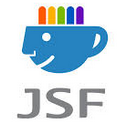Groovy is another popular programming language for the Java Virtual Machine. Groovy is dynamically typed, and groovy code can be more concise than the equivalent Java because you can omit types of variables and parameters. Almost any Java code is legal groovy, that’s make it simple and easier for getting started using it. Ultimately, using the Groovy …
JSF Integration
Integrating JSF and JPA
Introduction MVC architecture has become the default choice for developing web applications. It has become a tradition to develop web applications using multi-tier architecture and hence involving one or more Frameworks. A Framework ensures faster development cycle and guarantees the usage of proven design patterns and architecture. There are various Frameworks available for each layer; …

